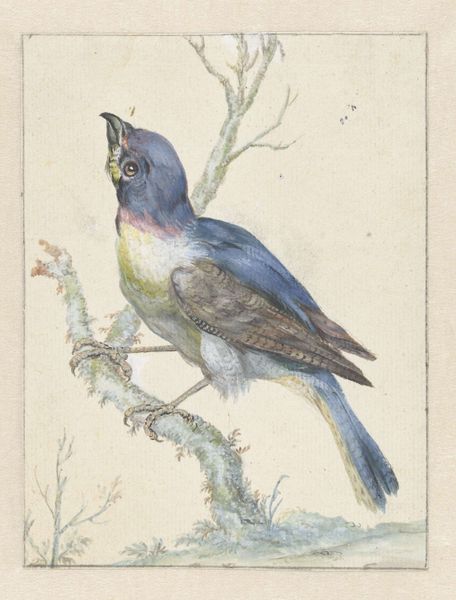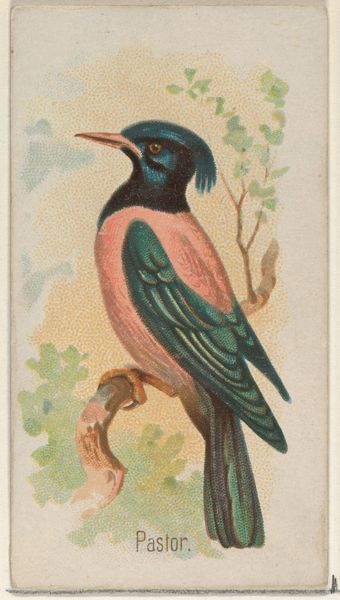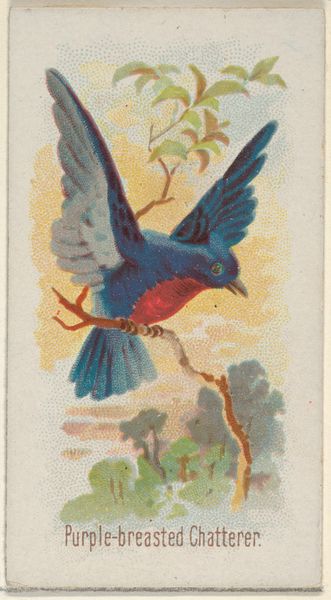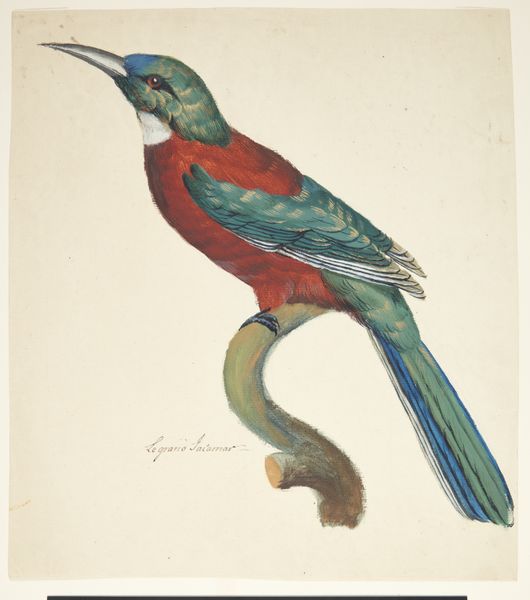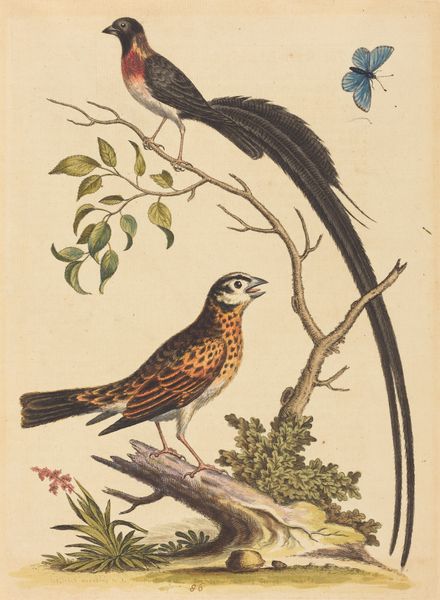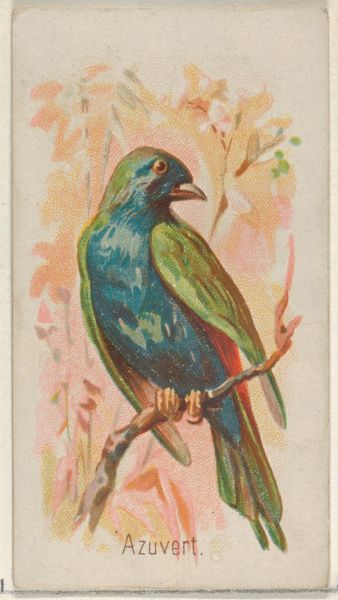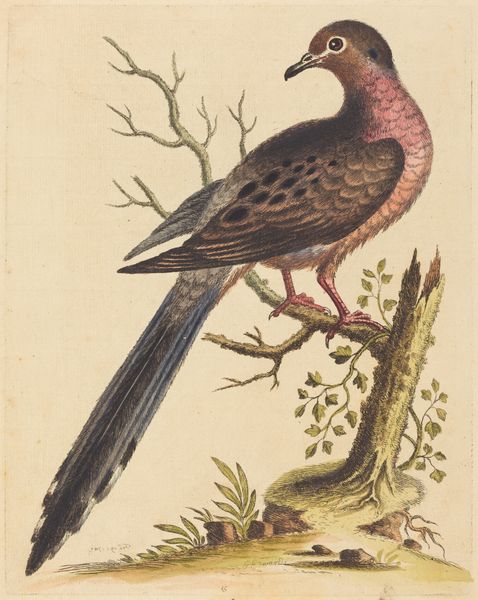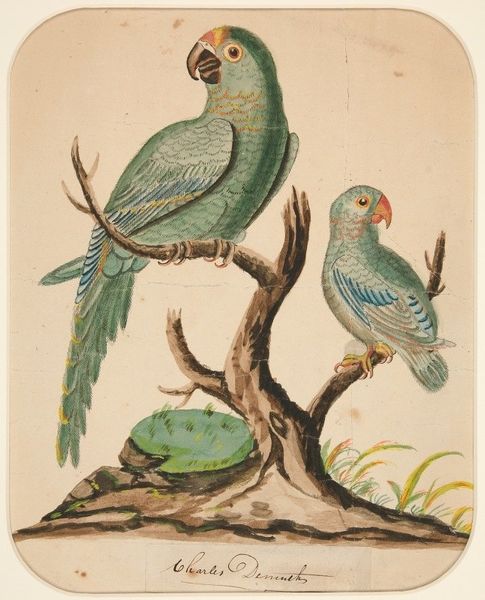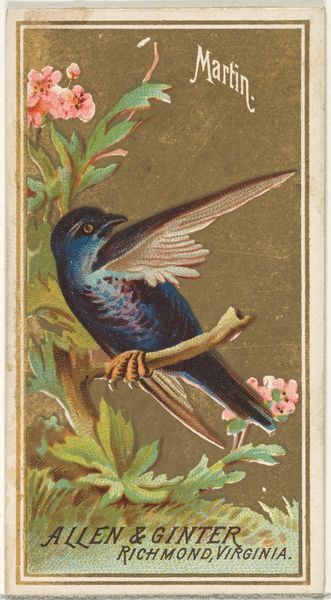
drawing, print, etching, watercolor
#
portrait
#
drawing
# print
#
etching
#
caricature
#
watercolor
#
animal portrait
#
watercolour illustration
#
botanical art
#
watercolor
Copyright: National Gallery of Art: CC0 1.0
Editor: This is a print entitled "Merle Violet, du Royaume de Juda," by an artist known as Matinet. It looks like it's rendered with etching and watercolor. What I find most striking is the way the bird is depicted, almost as a caricature, yet the botanical details are quite precise. How do you interpret this work? Curator: Well, looking at it historically, these kinds of prints were popular during a time of intense scientific exploration and colonization. The detailed rendering, as you pointed out, serves a purpose. They weren’t just artistic endeavors; they were attempts to document and classify the natural world, to lay claim to knowledge about these newly "discovered" species. Editor: So it’s more than just a pretty bird picture. Curator: Precisely! Think about the title: "Merle Violet, du Royaume de Juda." "Royaume de Juda"—the Kingdom of Judah. It links the exotic, newly cataloged natural world with historical and often biblically-referenced geography, lending an air of authority, but also perhaps inadvertently hinting at appropriation. Where was this meant to be viewed? Editor: Probably in a book or a collection owned by a wealthy patron, maybe? Curator: Exactly. These images circulated within specific social and intellectual circles, reinforcing power structures and contributing to the era’s imperialistic gaze. And look at the strong yellow border; does it look like a frame or a cage? Editor: It does feel a bit like a cage now that you mention it. It definitely changes my perception of the artwork, from a decorative piece to something with complex social implications. Curator: And that is the beauty of art history. It shows us how art is so enmeshed within society.
Comments
No comments
Be the first to comment and join the conversation on the ultimate creative platform.



